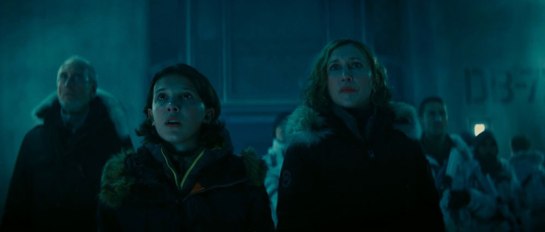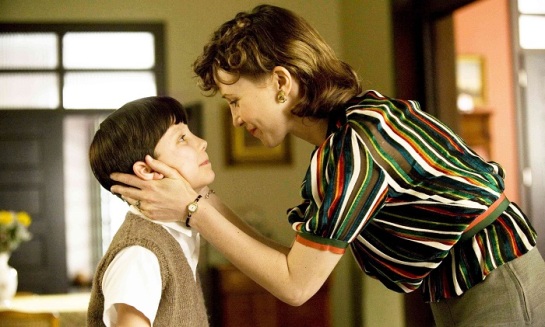
In 2014 director Gareth Edwards brought Godzilla back to the big screen. His monster reboot was the 30th film in the near 70-year-old Godzilla franchise and the first film in Warner Brothers’ interconnected MonsterVerse. I loved the movie and its slow-burning, old-school, creature-feature vibe.
Relatively new director Michael Dougherty (“Krampus”) takes the reins of the sequel “Godzilla: King of the Monsters” and delivers a movie quite different from its predecessor. The slow-burn is gone and the large-scaled Kaiju action is front and center. And where the Edwards’ film could also be sold as a stand-alone movie, this one feels very much a part of something bigger and broader.

I wouldn’t call this a spoiler but the last film ended with Godzilla sinking back into the ocean after leveling San Francisco in a fight with an earth-threatening monster. Jump ahead five years. Paleobiologists Mark Russell (Kyle Chandler) and his wife Emma (Vera Farmiga) lost their young son during the destruction of San Francisco. They have since divorced under the stress of loss leaving their 12-year-old daughter Madison (Millie Bobby Brown) caught in the middle.
While Mark has been off the radar Emma has been working with the super-secret shadow organization called Monarch. They’ve been monitoring not just the movements of Godzilla but the locations of numerous other monsters (called Titans) scattered across the globe in various forms of hibernation. Even more, Emma has constructed a device called ORCA that emits a sonar pulse which can either calm or rile the Titans. This catches the attention of a devious eco-terrorist group, Mark is drawn into the chaos, and a lot of big monsters rise up.
The human dynamic is interesting in a variety of ways. The Russell family drama is easily the most intimate, but it’s the broader human story that’s most compelling. As Dougherty himself describes it to Entertainment Weekly, “The world is reacting to Godzilla in the same way we would react to any other terrifying incident, in that we are overreacting.” We see mankind responding to the monsters impulsively – out of fear and uncertainty. And the question becomes how far can humanity’s intelligence and ingenuity take them in the face of such mighty threats?

All of this is explored through a fine ensemble – Ken Watanabe, Sally Hawkins, Charles Dance, Thomas Middleditch, Bradley Whitford, David Strathairn, Zhang Ziyi, among others. They all fall in nicely with a script that hearkens back (in a measured way) to the classic Toho Studio films. We get countless reaction shots, stunned utterances, and quick quips. Some may not like what they’re going for, but I got a kick out of it. And I appreciate how the film steers clear of drawn out exposition and loads of scientific mumbo-jumbo.
A handful of characters do get pushed to the side but that’s okay because they do exactly what they need to do – service the story and keep it moving towards what we really are there to see – the monsters! And the Titans really are the showcases. In addition to Godzilla we get classic Toho creations Mothra, Rodan, and King Ghidorah. The creature designs are stunning and their epic-scaled clashes are breathtaking spectacles. The special effects, Lawrence Sher’s crafty cinematography, and top-notch sound design makes for some truly satisfying and immersive Kaiju mayhem.

I can already hear the pushback from those wanting more human drama in a movie about massive earth-moving monsters. I actually like the way they unpack the human story amid a breathless array of action. And I appreciate how they add layers of intriguing mythology without drowning us in babble. And I can also hear those wanting more of Godzilla on the screen. There are indeed huge segments where we don’t see him. But I was fine with it because his presence never leaves our mind. While things were playing out in front of me, I kept thinking “but Godzilla”.
So it makes sense to me that many have dismissed “Godzilla: King of the Monsters” the way they have. But at the same time it saddens me. Michael Dougherty has delivered a Godzilla movie that is unquestionably action-heavy, probably too much for those with no affection for the classic creature-features. But while the film is tipping its hat to its roots, it’s also subtly holding a mirror to modern society. I feel many have missed that element which is unfortunate. But when that human detail is combined with some of the best big monster action ever put on screen, all I can say is ‘Long Live the King’.
VERDICT – 4.5 STARS


















